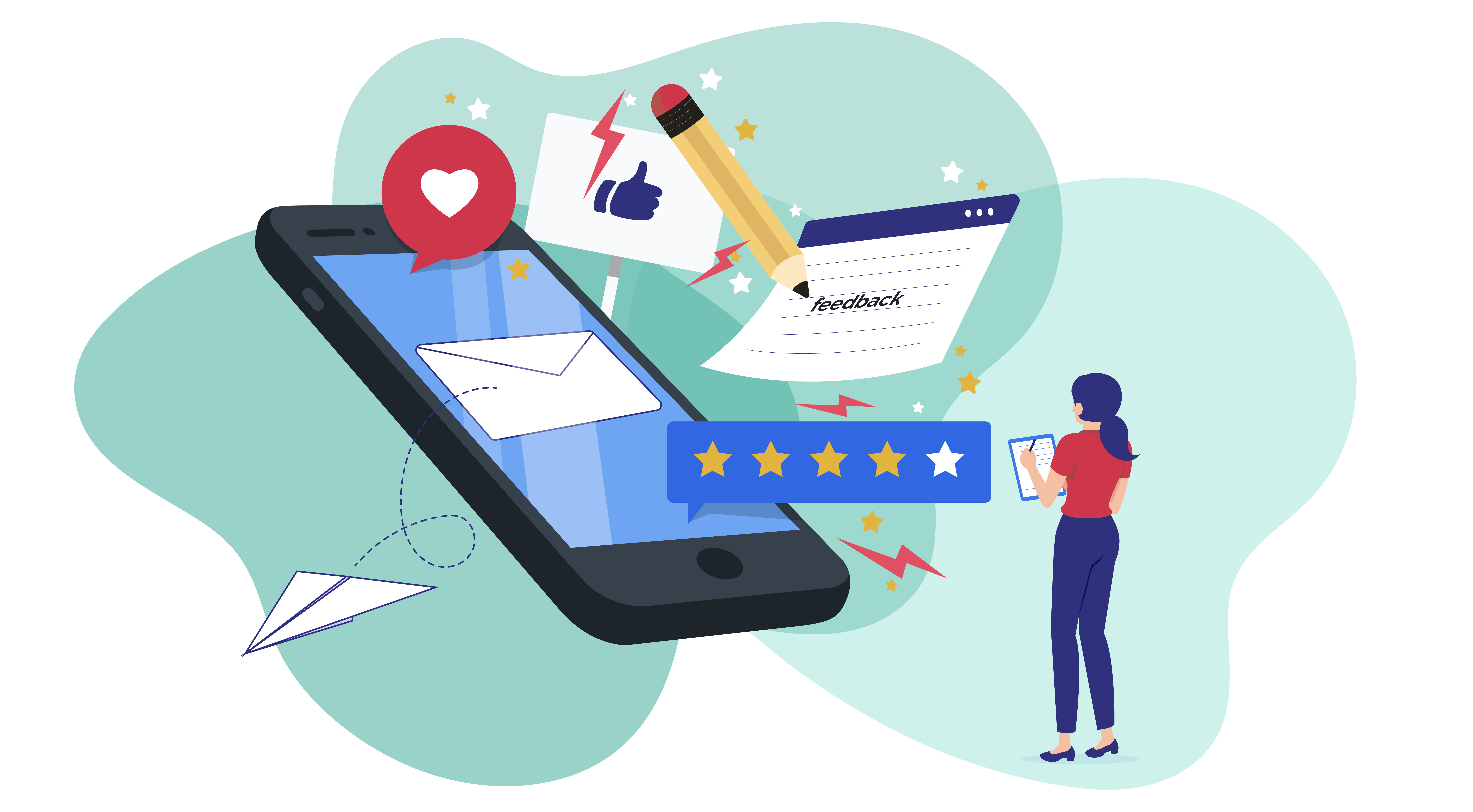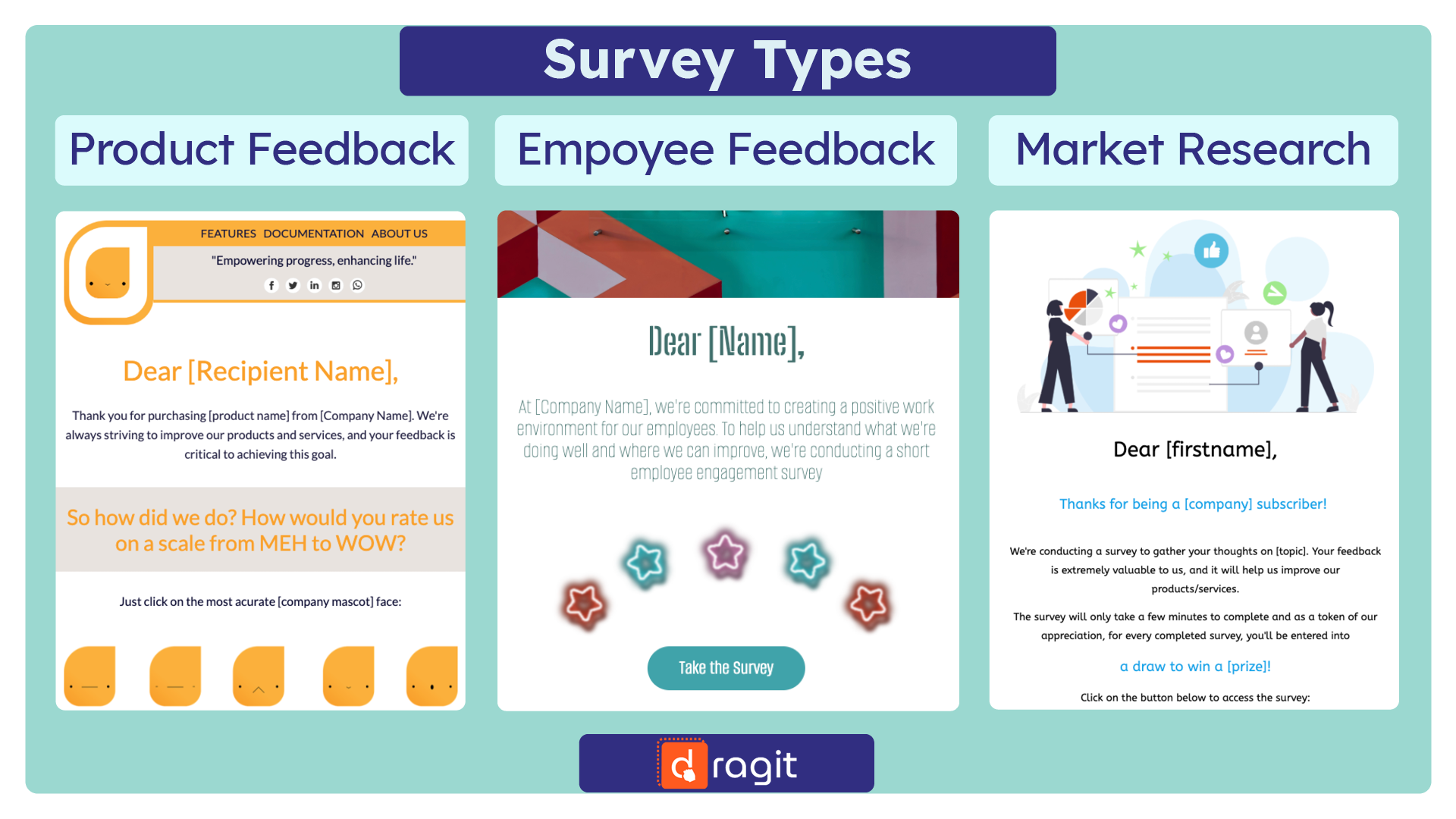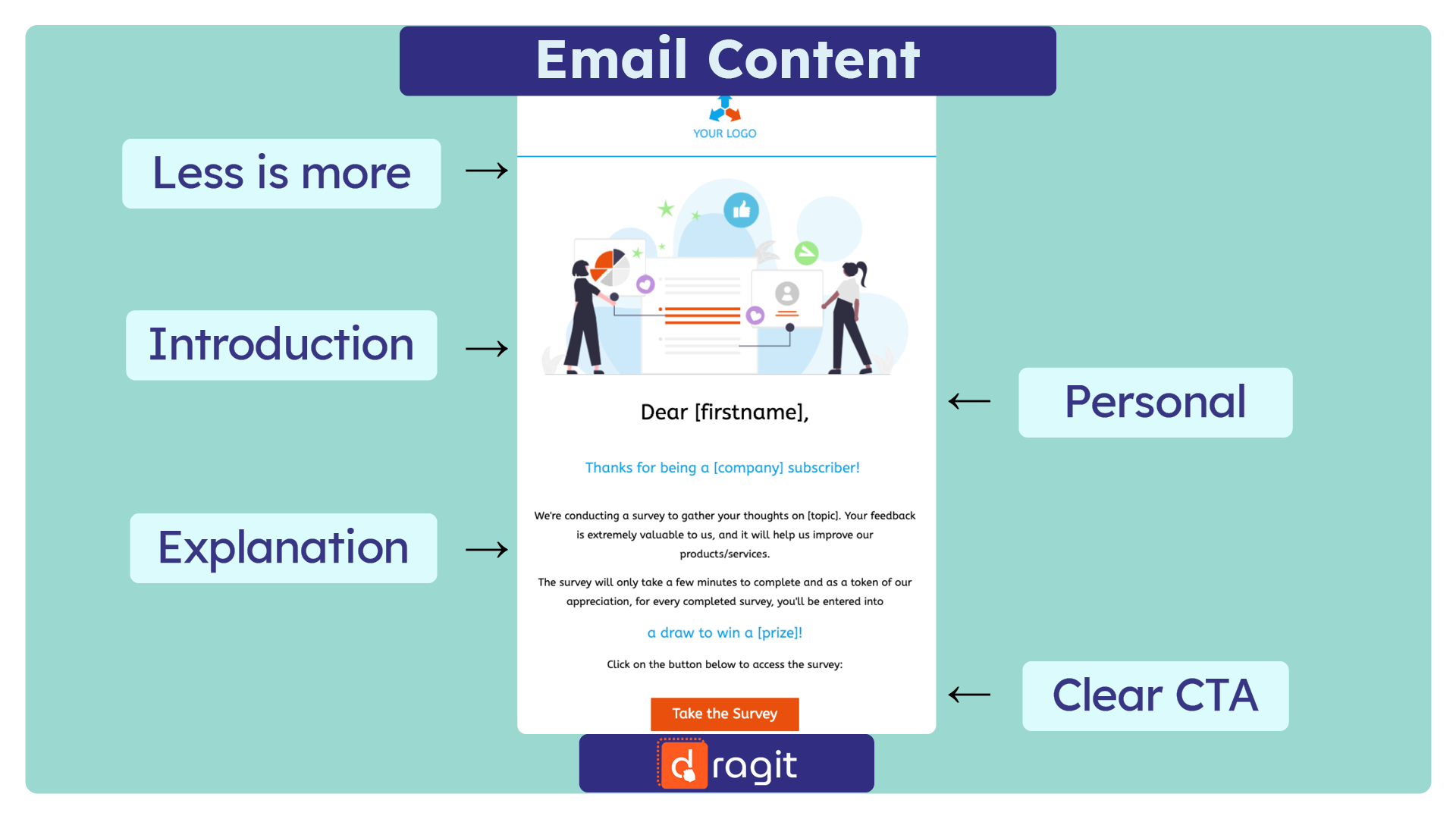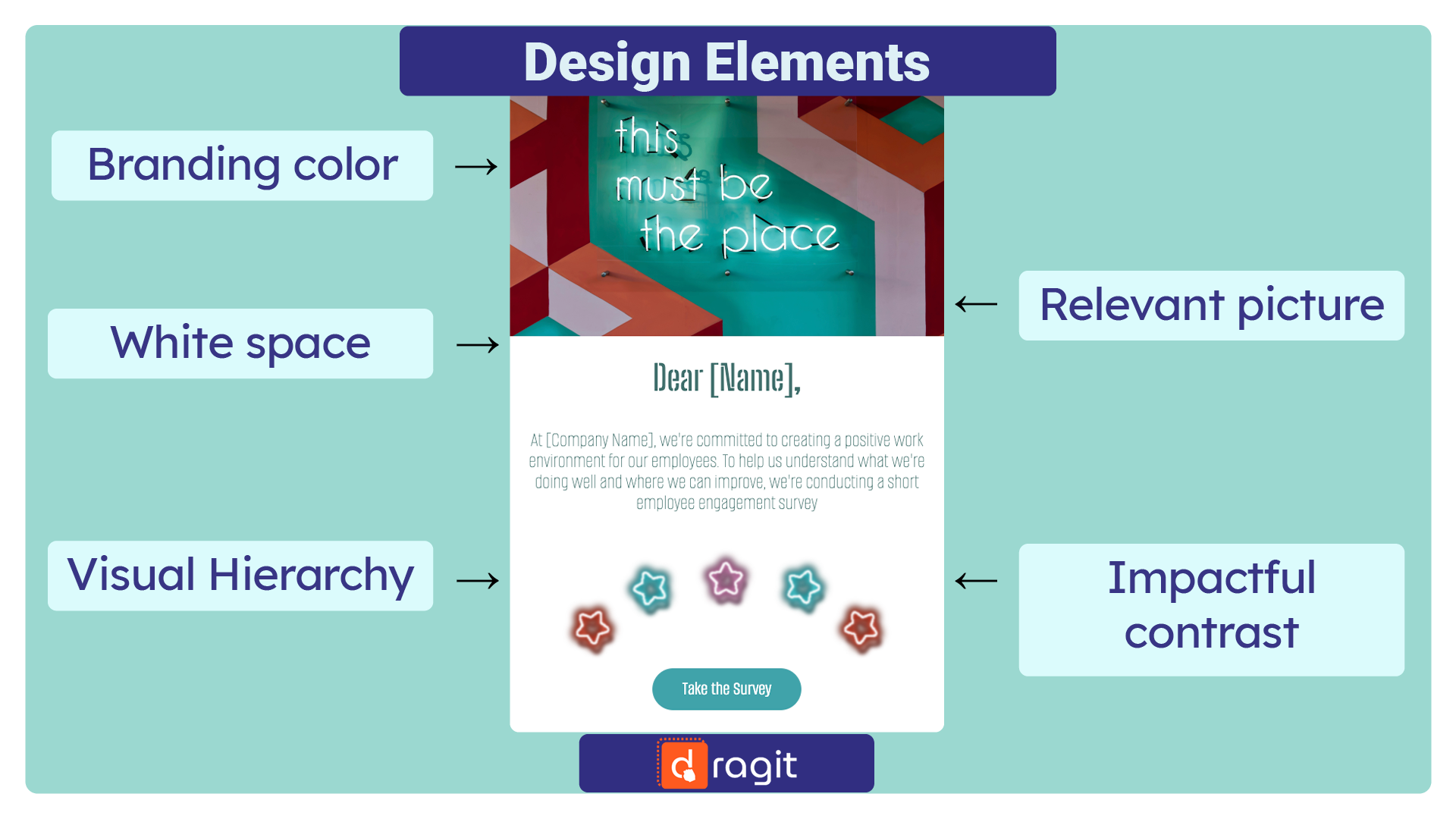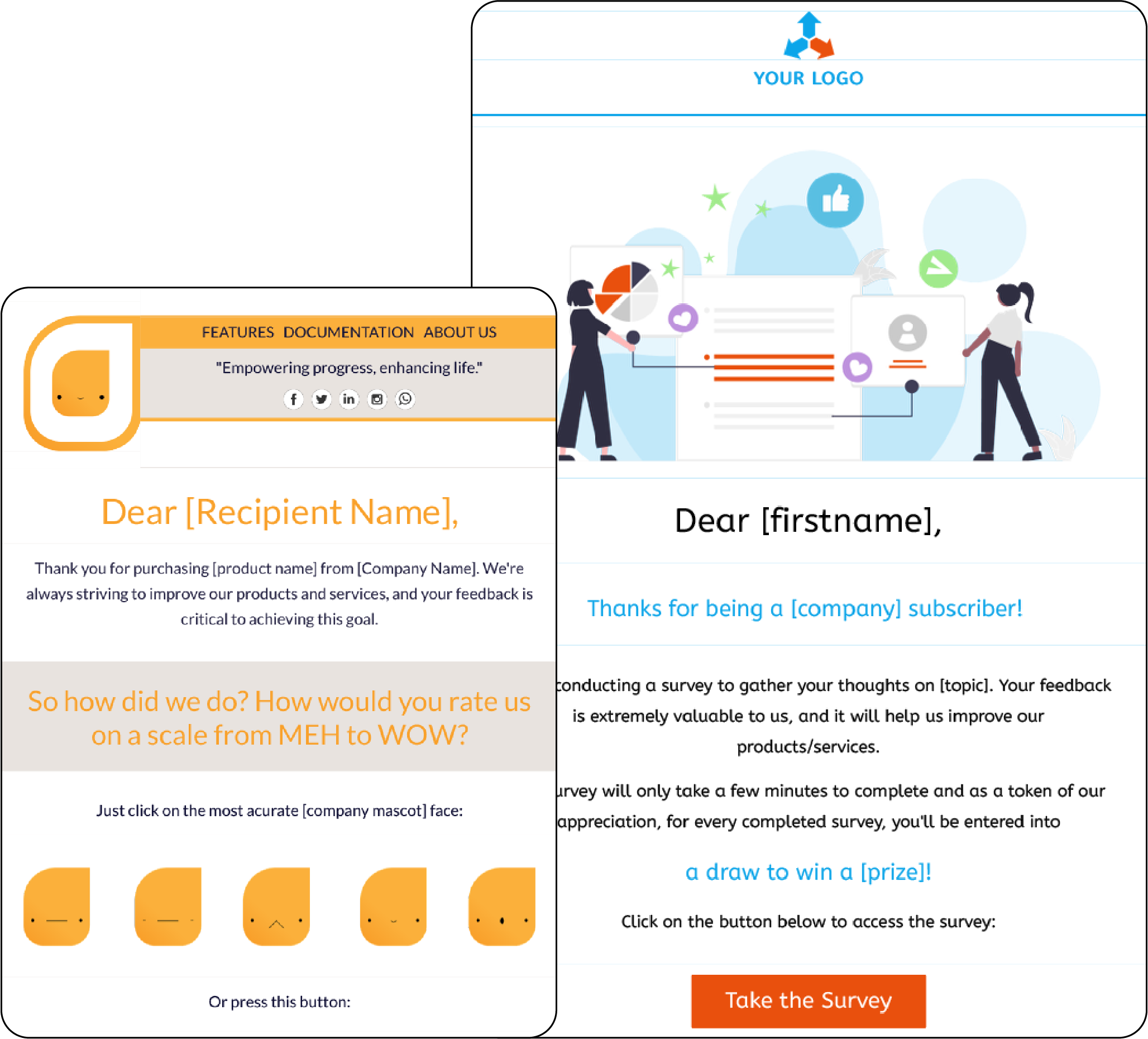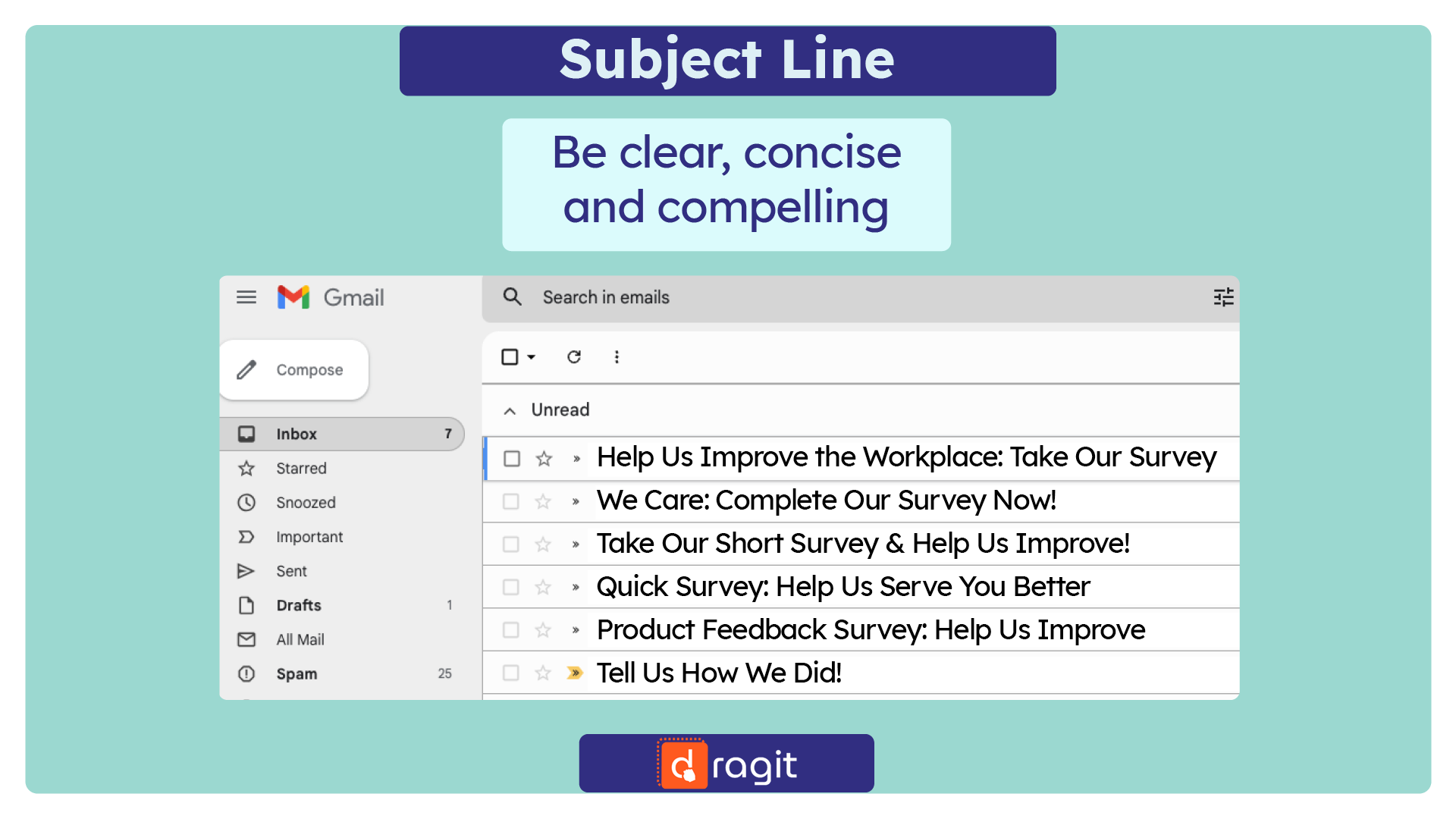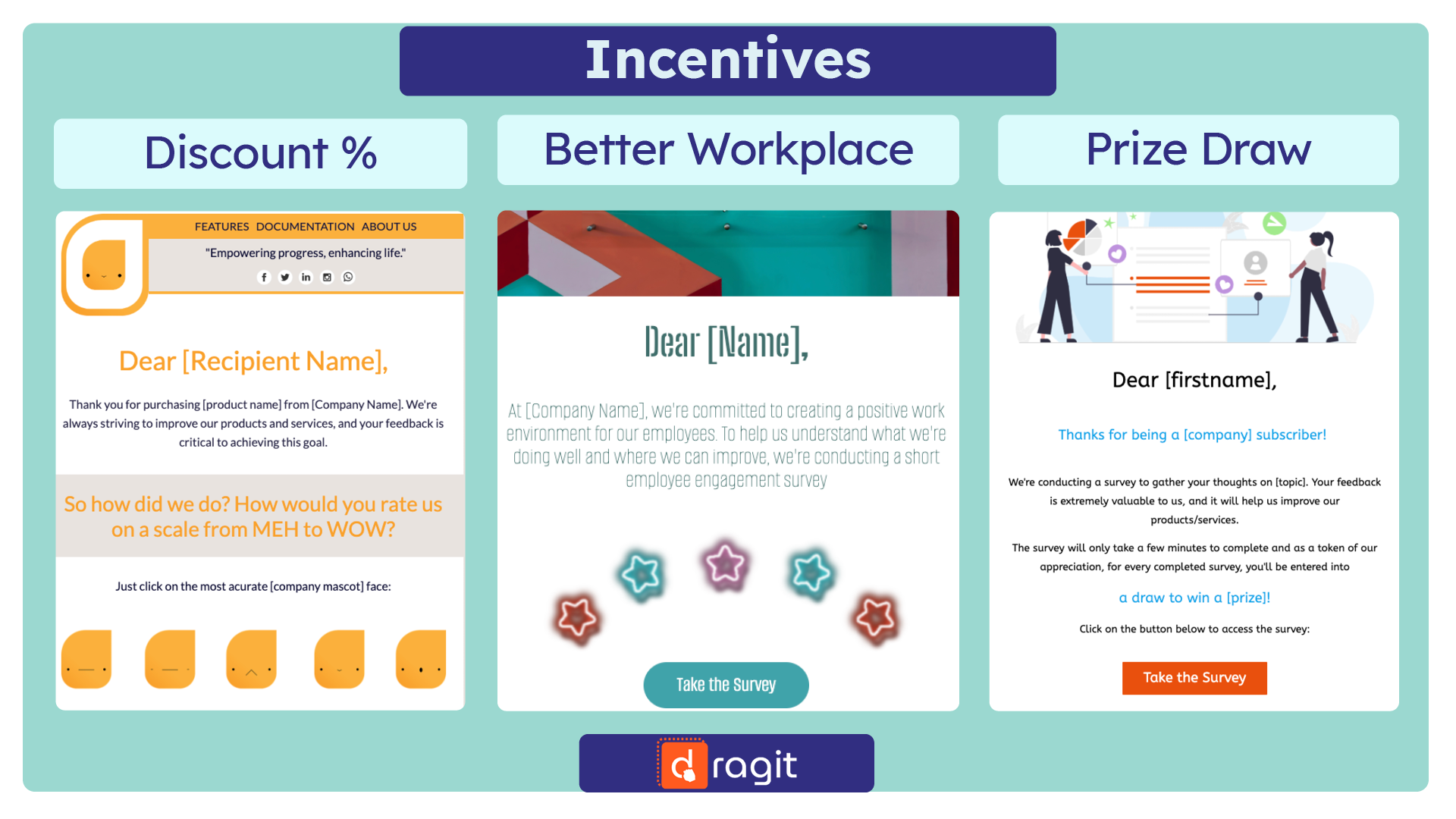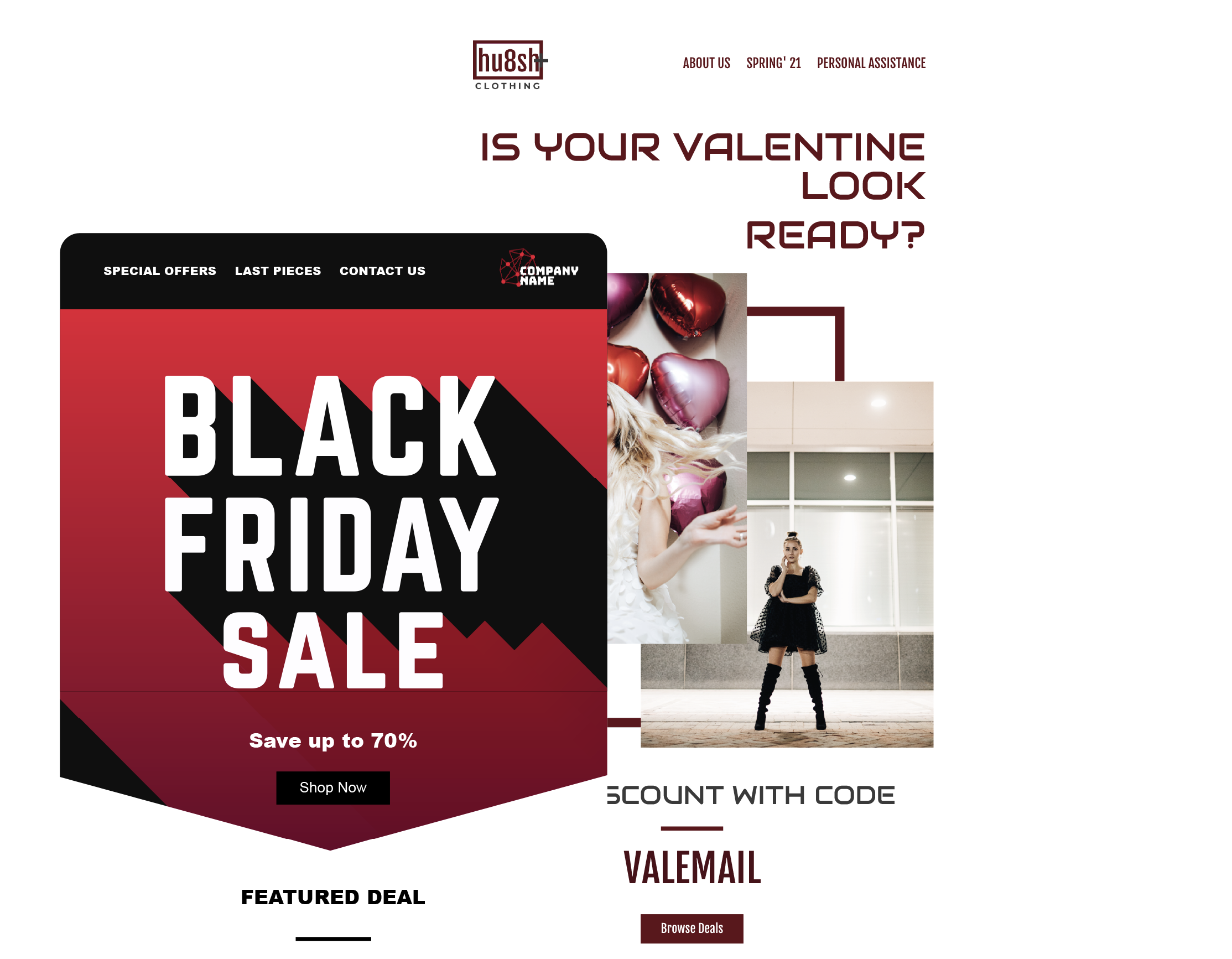Survey emails are a fantastic way to do so if you're looking to gain valuable insights from your customers, workers, or subscribers. Whether you're asking for feedback on a recent purchase, trying to gauge satisfaction with your services, or are just curious about your audience's preferences, a well-crafted survey email can be a powerful tool in your arsenal. However, with so many businesses vying for their attention in their inboxes, ensuring that your survey email stands out and encourages your subscribers to take action is essential. In this article, we'll go over five best practices for creating effective survey emails that will help you gather the data you need and improve engagement with your customers. And as usual, you can look forward to our new free email templates. So let's get into it!
Top 5 Types of Survey Emails
Survey emails are a valuable tool for businesses to gather valuable feedback and insights from their customers, employees, or target audience. Whether you're looking to measure customer satisfaction, understand employee engagement, conduct market research, gather product feedback, or get feedback on an event, survey emails can help you collect the information you need. This section will discuss the top 5 types of survey emails and their unique benefits and uses.
Top types of survey emails:
- Customer Satisfaction Surveys: These surveys are sent to customers to gather their opinions and feedback on a company's products or services. The goal of customer satisfaction surveys is to measure customer satisfaction and identify areas for improvement.
- Employee Engagement Surveys: These surveys are sent to employees to gather their opinions and feedback on their work environment, job satisfaction, and overall experience at the company. Employee engagement surveys aim to understand the factors contributing to employee engagement and job satisfaction.
- Market Research Surveys: These surveys are sent to potential customers or a targeted audience to gather information about their preferences, needs, and opinions on a specific product or service. Market research surveys aim to collect valuable data to inform business decisions.
- Product Feedback Surveys: These surveys are sent to customers who have recently purchased a product to gather their opinions and feedback. Product feedback surveys aim to identify areas for improvement and enhance the product experience for future customers.
- Event Feedback Surveys: These surveys are sent to attendees to gather their opinions and feedback on the event. Event feedback surveys aim to understand what aspects of the event worked well and what could be improved for future events.
Get This PRO* Product Feedback Email Template Here : Template
Get This FREE Employee Feedback Email Template Here : Template
Get This FREE Market Research Email Template Here : Template
*FREE for Dragit Pro Users.
5 Email Content Elements to Build Compelling Survey Emails
The content of your survey email is just as important as its design when building compelling survey emails. The right content can grab the recipient's attention, encourage them to complete the survey, and provide valuable feedback. In this section, we'll explore the critical components of an effective survey email; by incorporating these elements into your survey emails, you'll be able to create engaging, informative, and effective emails. So here they are:
- Introduction: A clear and concise introduction can set the tone for the rest of the survey email and ensure that the recipient knows what the survey is about. The introduction should explain the purpose of the survey and what the recipient can expect.
- Explanation of Benefits: Explain to the recipient why their feedback is essential and what benefits they will receive from completing the survey. This could include improving the products or services they receive, enhancing the overall customer experience, or helping to shape the company's future.
- Call to Action: Make sure to include a clear call to action (CTA) in the survey email that encourages the recipient to complete the survey. This could be as simple as "Take the survey now" or "Share your feedback."
- Thank You Message: After the recipient completes the survey, include a thank you message acknowledging their time and effort. You can also provide a preview of the results or offer something in return, such as a discount or exclusive content.
- Closing: The closing of the survey email should summarize the purpose of the survey and thank the recipient once again for their time and feedback. Consider including a statement that emphasizes the importance of the recipient's input and the impact it will have.
By including these key elements in the content of your survey emails, you can ensure that your survey emails are engaging, informative, and practical.
5 Email Design Elements to Create effective Survey Emails
Design is a critical element in creating an effective survey email. Not only can it capture your audience's attention, but it can also help communicate the purpose of the survey in a clear and concise manner. By incorporating design elements that are both visually appealing and easy to navigate, you can improve your email's chances of being opened, read, and acted upon. Here are five design elements to focus on when designing survey emails:
- Branding: Incorporating your company's branding, such as your logo, color scheme, and typography, can help reinforce your brand image and build trust with your audience.
- Visual Hierarchy: Use visual hierarchy to guide your recipient's eye through your email's content. This can include using headlines, subheadings, and bullet points to break up your text and draw attention to your most important messages.
- Color Scheme: Your email's color scheme can significantly impact its visual appeal and readability. Use colors that align with your brand's image and complement each other to create a cohesive and eye-catching design.
- Images: Incorporating images into your survey email can make it more visually engaging and help convey your message more effectively. Use high-quality images relevant to your survey's topic to create a more immersive experience.
- White Space: Too much text and clutter can overwhelm your recipient and decrease the likelihood of engagement. Use white space to create a clean, visually appealing layout highlighting your key messages.
5 Best Practices for Best Survey Emails
Designing and sending effective survey emails is crucial for businesses seeking valuable feedback and insights from their target audience. However, with so many survey emails being sent daily, it's essential to follow best practices to ensure your survey emails stand out and get the response rate you're hoping for. In this section, we'll cover 5 best practices for survey emails, including crafting compelling subject lines, keeping your survey short and sweet, and following up with respondents.
Whether you're a seasoned pro or new to survey emails, these best practices will help you get the most out of your survey email efforts. Here they are:
1. Compelling subject line: Your subject line is the first thing recipients see, so it's crucial to make it attention-grabbing and relevant. A subject line like "Share your thoughts and win a prize!" is much more likely to entice someone to open your email than one that simply says "Survey invitation."
- Share Your Feedback and Help Shape Our Future
- We Want to Hear from You - Take Our Survey Now!
- Your Feedback Can Make a Difference - Take Our Survey Today!
- Your Opinion Matters - Take Our Survey and Get a Discount!
- Help Us Improve - Share Your Feedback and Win a Prize!
2. Short and sweet: People are inundated with emails daily, so keep your survey email short and to the point. Provide a clear explanation of the survey, why it's essential, and how long it will take to complete
3. Offer incentives: Offering incentives can help boost response rates. Make sure to clearly communicate the incentives in your email and how recipients can claim them. Here are some incentives that can be included in survey emails to encourage recipients to participate:
- Discount or Coupon: Offer a discount or coupon code for their next purchase as a thank you for taking the survey.
- Prize Draw: Hold a prize draw for survey participants with a chance to win a valuable item such as a product, gift card, or cash prize.
- Exclusive Access: Give survey participants exclusive access to new products, services, or content before anyone else.
- Loyalty Points: Offer loyalty points or rewards for taking the survey that can be redeemed for products, services, or other benefits.
- Personalized Recommendations: Provide survey participants customized recommendations based on their responses.
- Early Access: Offer early adopter access to new products or services based on survey responses.
- Free Sample or Trial: Provide a free sample or trial of a product or service as a thank you for taking the survey.
- Improved User Experience: Use survey results to improve the overall user experience and provide more personalized, relevant products and services.
- Enhanced Support: Use survey results to improve support services and provide customers more personalized, helpful support.
- Free Consultation: Offer a free consultation or expert advice to thank you for taking the survey.
4. Make the survey accessible: Make sure that the survey is easily accessible from the email. Provide a clear call-to-action and a direct link to the survey that's easy to click.
5. Follow-up: If you don't receive a response from the first email, consider following up with a second email. Keep the follow-up brief, but remind the recipient of the incentive for completing the survey and the deadline for responding.
Summary
To sum it up, when it comes to survey emails, the content and design elements play a critical role in the success of your campaign. Your email content should be brief, engaging, and clearly communicate the purpose of the survey, while your design should be visually appealing and easy to navigate. Your email should capture your audience's attention and entice them to complete the survey. Incorporating branding and personalized elements, such as the recipient's name or previous purchase history, can also go a long way in building a connection with your audience. By taking the time to create a thoughtful and visually appealing survey email, you'll not only improve the chances of a higher response rate, but you'll also enhance your overall brand image. Try using Dragit Email editor to create visually appealing and compelling survey emails with ease.
